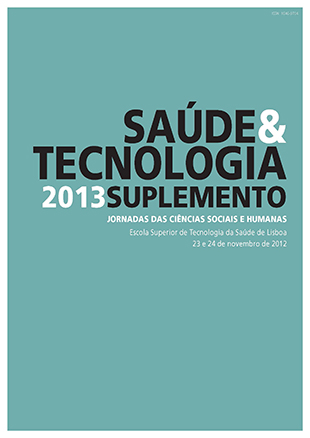Assessment and management of pain in children: a decade
DOI:
https://doi.org/10.25758/set.844Keywords:
Assessment, Management, Pain, ChildAbstract
Introduction – Negligence in pain control is a widely recognized problem. Since 2001, Portugal has developed many initiatives to improve health care practices in this area, such as awareness-raising campaigns, training of health care professionals, and publication of technical guidelines and good practice guides. Some studies on this topic have also been conducted to make a diagnosis of the situation. Aims – This study aimed to characterize the type of care provided in terms of pain assessment and control in children up to 18 years hospitalized in Portugal, and also analyze the evolution of this type of care between 2002 and 2012. Methodology – A descriptive, cross-sectional study with a retrospective review of intermittent records made during a 24-hour period. The sample was randomly selected and included the medical records of children up to 18 years hospitalized in four Portuguese hospitals between August and December 2011. Results – Pain prevalence decreased significantly between 2002 and 2012. The percentage of children without pain increased from 37% to 75%. Recording the assessment of pain intensity and collecting information on the pain history became a common practice in most cases (53% and 64%, respectively), although it was still aimed at the biomedical model of health care. No changes were found in the prevalence of pharmacological interventions (43% vs. 42%), but the implementation of non-pharmacological strategies decreased significantly (72% vs. 15%). Conclusions – Awareness-raising/training sessions conducted within the scope of the policies implemented within the last decade in the area of pediatric pain assessment and control have led to significant gains in the quality of care, and for this reason, the investment should continue. However, priority should be given to training for the implementation of non-pharmacological intervention strategies and to the development of further research to support the practices.
Downloads
References
Direção-Geral da Saúde, Associação Portuguesa para o Estudo da Dor. Plano nacional de luta contra a dor. Lisboa: DGS; 2001.
Direção-Geral da Saúde. A dor como 5º sinal vital: registo sistemático da intensidade da dor. Circular Normativa nº 9/DGCG, de 14/06/2003. Lisboa: DGS; 2003.
Ministério da Saúde. Plano nacional de saúde 2004-2010. Vol. II: orientações estratégicas. Lisboa: Ministério da Saúde; 2004. ISBN 9726751098
Conselho de Enfermagem da Ordem dos Enfermeiros. Dor: guia orientador de boa prática. Lisboa: OE; 2008. ISBN 9789729964695
Direção-Geral da Saúde. Programa nacional de controlo da dor. Circular Normativa nº 11/DSCS/DPCP, de 18/06/2008. Lisboa: DGS; 2008.
Direção-Geral da Saúde. Orientações técnicas sobre a avaliação da dor nas crianças. Orientação da DGS nº 14/2010, de 14/12/2010. Lisboa: DGS; 2010.
Direção-Geral da Saúde. Orientações técnicas sobre o controlo da dor nos recém-nascidos (0 a 28 dias). Orientação da DGS nº 24/2012, de 18/12/2012. Lisboa: DGS; 2012.
Direção-Geral da Saúde. Orientações técnicas sobre o controlo da dor nas crianças com doença oncológica. Orientação da DGS nº 23/2012, de 18/12/2012. Lisboa: DGS; 2012.
Direção-Geral da Saúde. Orientações técnicas sobre o controlo da dor em procedimentos invasivos nas crianças (1 mês a 18 anos). Orientação da DGS nº 22/2012, de 18/12/2012. Lisboa: DGS; 2012.
Batalha L. Dor em pediatria: compreender para mudar. Lisboa: Lidel; 2010. ISBN 9789727575930
Polit DF, Beck CT, Hungler BP. Fundamentos de pesquisa em enfermagem: métodos, avaliação e utilização. 5ª ed. Porto Alegre: Artmed; 2004. ISBN 9788573079845
Taylor EM, Boyer K, Campbell FA. Pain in hospitalized children: a prospective cross-sectional survey of pain prevalence, intensity, assessment and management in a Canadian pediatric teaching hospital. Pain Res Manag. 2008;13(1):25-32.
Groenewald CB, Rabbitts JA, Schroeder DR, Harrison TE. Prevalence of moderate-severe pain in hospitalized children. Paediatr Anaesth. 2012 Jul;22(7):661-8.
Parse RR. Nursing science: major paradigms, theories and critiques. Philadelphia: WB Saunders; 1987. ISBN 9780721618036
Downloads
Published
Issue
Section
License
Copyright (c) 2022 Saúde e Tecnologia

This work is licensed under a Creative Commons Attribution-NonCommercial-NoDerivatives 4.0 International License.
The journal Saúde & Tecnologia offers immediate free access to its content, following the principle that making scientific knowledge available to the public free of charge provides greater worldwide democratization of knowledge.
The journal Saúde & Tecnologia does not charge authors any submission or article processing charges (APC).
All content is licensed under a Creative Commons CC-BY-NC-ND license. Authors have the right to: reproduce their work in physical or digital form for personal, professional, or teaching use, but not for commercial use (including the sale of the right to access the article); deposit on their website, that of their institution or in a repository an exact copy in electronic format of the article published by Saúde & Tecnologia, provided that reference is made to its publication in Saúde & Tecnologia and its content (including symbols identifying the journal) is not altered; publish in a book of which they are authors or editors the total or partial content of the manuscript, provided that reference is made to its publication in Saúde & Tecnologia.







